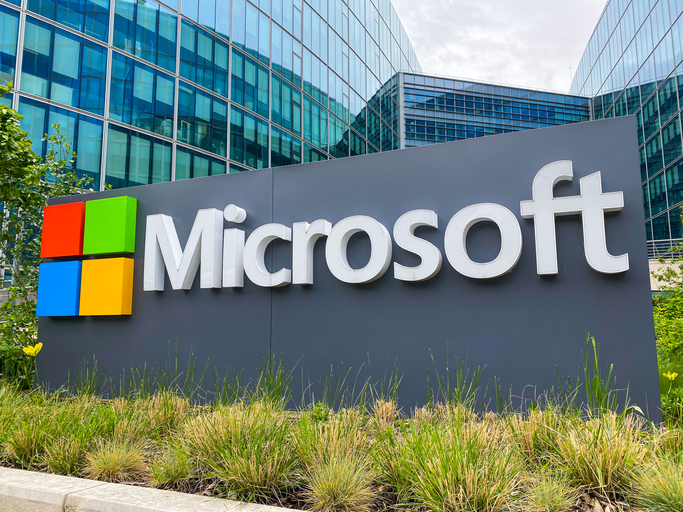The Rise of Microsoft: How It Became a Tech Giant
From a small software startup to one of the most powerful companies in the world, Microsoft has played a pivotal role in shaping the technology industry. Founded by Bill Gates and Paul Allen, the company revolutionized personal computing, software development, and cloud computing, securing its place as a dominant force in tech. But how did it all begin? Let’s explore Microsoft’s journey, from its early days to its meteoric rise.
When Was Microsoft Released to the Public?
Microsoft was founded on April 4, 1975, in Albuquerque, New Mexico. However, it wasn’t a publicly traded company at the time. For the first few years, Microsoft operated as a small software development firm, creating programs for early microcomputers.
It wasn’t until March 13, 1986, that Microsoft went public with an initial public offering (IPO) at $21 per share. The IPO was a massive success, instantly making Bill Gates a millionaire and setting the stage for Microsoft’s rapid growth. By the late 1990s, Microsoft had cemented itself as a leader in the software industry, thanks to products like Windows, Office, and Internet Explorer.
What Was Microsoft’s First Product?
Microsoft’s first official product was a version of the BASIC programming language developed for the Altair 8800, an early personal computer. This marked the company’s first big break, as personal computers were just starting to gain popularity.
However, Microsoft’s real breakthrough came in 1981 when it developed MS-DOS (Microsoft Disk Operating System) for IBM’s first personal computer. MS-DOS became the foundation for Microsoft’s future operating systems, including the wildly successful Windows.
How Did Microsoft Become Successful?
The Rise of Windows
One of Microsoft’s biggest turning points was the launch of Windows 1.0 in 1985. Although it wasn’t an immediate success, later versions—Windows 3.0 (1990) and Windows 95 (1995)—transformed Microsoft into a tech powerhouse. Windows 95, in particular, was a game-changer with its iconic Start menu, taskbar, and improved user interface.
By the early 2000s, Microsoft Windows had become the dominant operating system, running on more than 90% of personal computers worldwide.
Related: Zhang Yiming's Business Strategies: How He Built ByteDance Into a Global Powerhouse
Related: What Is Apple's Business Strategy and their biggest pitfalls?
Microsoft Office and Software Dominance
In 1989, Microsoft released Microsoft Office, which included essential programs like Word, Excel, and PowerPoint. The suite quickly became the standard for businesses and individuals, solidifying Microsoft’s dominance in the productivity software market.
The Internet Boom and Internet Explorer
During the 1990s, Microsoft capitalized on the internet revolution by launching Internet Explorer in 1995. The browser quickly overtook competitors like Netscape Navigator, securing Microsoft’s dominance in the web browser market for years.
The Shift to Cloud Computing
While Microsoft dominated the software industry for decades, it faced new competition from companies like Google and Apple. To stay relevant, Microsoft shifted its focus to cloud computing, launching Azure in 2010. Today, Microsoft Azure is one of the leading cloud platforms, competing with Amazon Web Services (AWS) and Google Cloud.
What Was the Public Reaction to Microsoft?
Early Days (1975–1990s): Excitement & Innovation
In its early years, Microsoft was seen as a revolutionary company that brought computing to the masses. Its partnership with IBM and the release of MS-DOS helped make personal computers more accessible, earning praise from tech enthusiasts and businesses.
However, as Microsoft grew into a corporate giant, it also faced criticism.
Related: Microsoft Through The Decades
Related: Microsoft CEO Gets $30M Raise While Laying Off Thousands and Facing Cyber Scandal!
Monopoly Allegations & Legal Battles (1990s–2000s)
By the late 1990s, Microsoft faced antitrust lawsuits for allegedly monopolizing the software industry. The U.S. government accused Microsoft of stifling competition, particularly with its bundling of Internet Explorer with Windows.
The landmark U.S. vs. Microsoft case in 2001 led to increased scrutiny, and Microsoft was forced to change its business practices. Despite the controversy, the company continued to grow and expand its influence.
Modern Era (2010s–Present): Resurgence & Innovation
Under CEO Satya Nadella, who took over in 2014, Microsoft reinvented itself by focusing on cloud computing, artificial intelligence, and gaming. The company acquired major brands like LinkedIn (2016), GitHub (2018), and Activision Blizzard (2023), expanding into new markets.
Today, Microsoft remains one of the most valuable companies in the world, with a market value exceeding $2 trillion.
Microsoft’s Lasting Legacy
Microsoft’s rise from a small software company to a global tech leader is nothing short of remarkable. With its pioneering operating systems, productivity software, and cloud services, the company has shaped how people and businesses interact with technology.
Despite challenges and competition, Microsoft continues to innovate, proving that it remains a dominant force in the tech industry. Whether through Windows, Office, or Azure, Microsoft’s impact on the digital world is undeniable.









